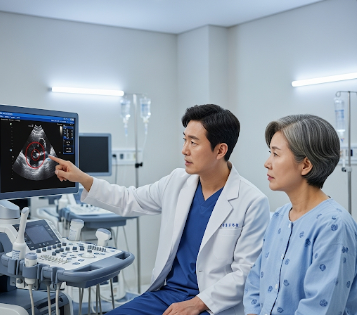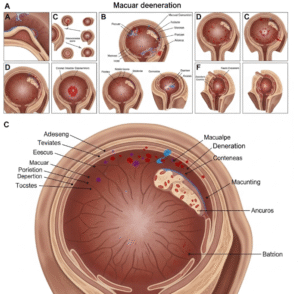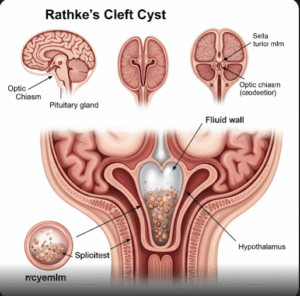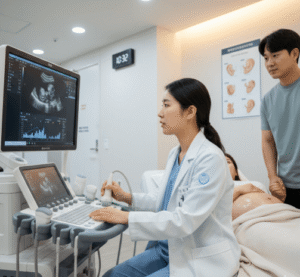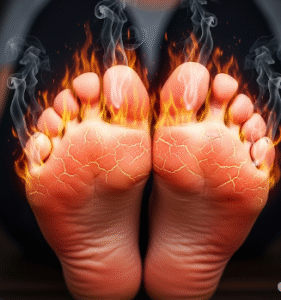Overview
Right atrial enlargement (RAE) refers to the increase in size of the right atrium of the heart, often due to pressure or volume overload. The right atrium receives blood from the body and pumps it into the right ventricle, which then sends it to the lungs. Enlargement of this chamber can indicate underlying heart or lung conditions.
In Korea, RAE is diagnosed using echocardiography, electrocardiography (ECG), and advanced imaging. Early detection is crucial because it may signal pulmonary hypertension, tricuspid valve disease, or chronic lung conditions.
➤ Can be asymptomatic initially
➤ Often detected during routine heart exams or ECGs
➤ Associated with underlying cardiovascular or pulmonary disease
➤ Requires thorough evaluation and management
Key Facts
➤ Right atrial enlargement can result from pressure overload (pulmonary hypertension) or volume overload (tricuspid regurgitation).
➤ Commonly diagnosed via ECG and echocardiography.
➤ May be associated with atrial arrhythmias, particularly atrial fibrillation.
➤ Timely treatment of underlying causes can prevent progression to heart failure.
What is Right Atrial Enlargement?
RAE is a structural change in the heart where the right atrium enlarges beyond its normal dimensions. The enlargement occurs as a compensatory response to increased pressure or volume in the right atrium.
Causes of RAE may include chronic lung diseases, valvular heart disease, congenital heart defects, or pulmonary hypertension.
What Symptoms Are Related To
RAE itself may not cause direct symptoms initially. Symptoms, when present, often relate to underlying heart or lung conditions:
➤ Palpitations or irregular heartbeat
➤ Shortness of breath (dyspnea)
➤ Fatigue or exercise intolerance
➤ Swelling in the legs, ankles, or abdomen (due to right-sided heart failure)
➤ Chest discomfort or pressure
➤ Cyanosis (bluish skin, if oxygenation is impaired)
What Causes / Possible Causes
Common causes of right atrial enlargement include:
➤ Pulmonary Hypertension – elevated pressure in pulmonary arteries increasing right atrial workload
➤ Tricuspid Valve Disease – regurgitation or stenosis leading to volume overload
➤ Chronic Lung Disease – COPD, interstitial lung disease causing cor pulmonale
➤ Congenital Heart Disease – atrial septal defects, Ebstein anomaly
➤ Right Ventricular Dysfunction – from myocardial infarction or cardiomyopathy
➤ Obstructive Sleep Apnea – chronic hypoxia leading to right heart strain
When Should I See My Doctor
Medical evaluation is necessary if you experience:
➤ Persistent shortness of breath or fatigue
➤ Swelling in legs or abdomen
➤ Palpitations or irregular heartbeat
➤ Chest pain or pressure
➤ History of lung disease, congenital heart defects, or valvular disease
⚠️ Early detection is essential to prevent progression to right heart failure or arrhythmias.
Care and Treatment
Management focuses on treating the underlying cause and preventing complications.
➤ Lifestyle Measures
➤ Low-salt diet to reduce fluid retention
➤ Regular exercise as tolerated
➤ Avoid smoking and manage weight
➤ Medical Treatments
➤ Medications for pulmonary hypertension (e.g., vasodilators)
➤ Diuretics to manage fluid overload
➤ Antiarrhythmic medications if atrial fibrillation develops
➤ Treatment for underlying lung disease (e.g., COPD management)
➤ Procedures & Surgery
➤ Tricuspid valve repair or replacement
➤ Closure of atrial septal defects
➤ Advanced therapies for pulmonary hypertension (balloon atrial septostomy or lung transplantation in severe cases)
Treatment Options in Korea
Korea provides state-of-the-art cardiology and pulmonary care for patients with RAE.
➤ Diagnostics
➤ Echocardiography – gold standard for chamber size assessment
➤ Electrocardiogram (ECG) – shows characteristic changes of RAE
➤ CT and MRI – detailed structural evaluation
➤ Right heart catheterization – to measure pulmonary pressures
➤ Treatment Approaches
➤ Specialized pulmonary hypertension centers
➤ Cardiothoracic surgery for valvular or congenital defects
➤ Interventional cardiology for minimally invasive repair
➤ Comprehensive heart failure management
➤ Top Hospitals in Korea for RAE & Heart Disease
➤ Asan Medical Center – Advanced cardiology & pulmonary hypertension care
➤ Samsung Medical Center – Minimally invasive cardiac procedures
➤ Seoul National University Hospital – Cardiothoracic surgery & imaging
➤ Severance Hospital (Yonsei University) – Comprehensive heart & lung disease management
Final Thoughts
Right atrial enlargement is often a sign of underlying cardiovascular or pulmonary disease. Early detection in Korea through echocardiography, ECG, and specialist consultation allows for effective management and prevention of complications like arrhythmias or right heart failure.
If you notice shortness of breath, palpitations, swelling, or chest discomfort, consult a cardiologist promptly for evaluation and treatment.

